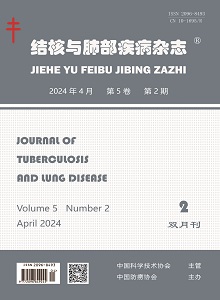Objective: To explore the influencing factors of sleep quality in elderly patients with advanced lung cancer undergoing chemotherapy, and to provide references for accurate nursing. Methods: A cross-sectional survey was conducted on 145 elderly patients with advanced lung cancer undergoing chemotherapy admitted to the Oncology Department of Shanghai Pulmonary Hospital from October 2022 to January 2023, using a patient general information questionnaire and the Pittsburgh sleep quality index (PSQI) scale and the Alcohol Use Disorder Identification Test (AUIDT) scale. PSQI≥8 was defined as the cutoff point for sleep disorders, the status of sleep quality and its influencing factors were analyze. Results: The average PSQI score of elderly patients with advanced lung cancer undergoing chemotherapy was (8.41±3.96), and the incidence of sleep disorders was 51.03% (74/145). The total PSQI score ($\bar{x}±s$) of female was (10.78±3.11), and the scores of subjective sleep quality ($\bar{x}±s$), time to sleep (M(Q1,Q3)), sleep duration (M(Q1,Q3)), and usage of hypnotic drugwere (M(Q1,Q3)) were (1.65±0.48), (1.87 (1.47,2.29), (1.78 (1.31,2.28)), and (1.09 (0.83,1.39)), respectively, which were significantly higher than those of men ((7.96±2.33), (1.13±0.33), (1.30 (1.26,1,33)), (1.22 (0.89,1.52)), and (0.19 (0.16,0.29)), respectively), the differences were statistically significant (t=2.673, 2.555, 2.421,U=2.667, and 2.924; P=0.013, 0.012, 0.022, 0.013, and 0.007, respectively). The scores of sleeping time ($\bar{x}±s$) and hypnotic drug usage ($\bar{x}±s$) in smokers were (1.67±0.48) and (0.93±0.29), respectively, which were significantly higher than those in non-smokers ((1.22±0.39) and (0.17±0.05), respectively), the differences were statistically significant (t=2.700 and 2.914; P=0.008 and 0.006, respectively). The score of hypnotic drug use (M(Q1,Q3)) dimension of those who with alcohol dependence history was (0.10 (0.06,0.12), which was significantly lower than that of those who without alcohol dependence history (0.39 (0.35,0.50)), (U=2.616, P=0.010). Patients with abnormal white blood cell counts had significantly higher total PSQI score (M(Q1,Q3)), sleep time ($\bar{x}±s$), and sleep disorder scores (M(Q1,Q3) compared to patients with normal white blood cell counts ((8.60 (4.36,8.73)vs. (6.88 (3.56,7.12), U=2.267, P=0.032; (1.45±0.43) vs. (0.94±0.28), t=2.137, P=0.034; and (1.30 (0.65,1.40)) vs. (1.01 (0.68,1.36), U=3.531,P=0.001, respectively). The daytime dysfunction ($\bar{x}±s$) dimension scores of individuals with abnormal hemoglobin and red blood cell count (1.25±0.36, 1.12±0.28) were higher than those of normal individuals (0.67±0.15, 0.76±0.18), and the differences were statistically significant (t=-3.475, -2.120; P=0.01, 0.036, respectively). The dimension score of hypnotic drug usage (M(Q1,Q3)) of patients with abnormal glutamic transaminase and direct bilirubin was higher than that of normal patients (0.36 (0.24,0.49) vs. 0.01 (0.00,0.01), 0.40 (0.26,0.51) vs. 0.11 (0.08,0.13), and the difference was statistically significant (U=4.425, 2.198; P=0.00, 0.030, respectively). Conclusion: The incidence of sleep disorders in elderly patients with advanced lung cancer undergoing chemotherapy is relatively high. In clinic, gender, smoking and alcohol history, daily activity ability, blood routine, and liver function indicators should be pay close attention to develop precise nursing plans.

 Wechat
Wechat